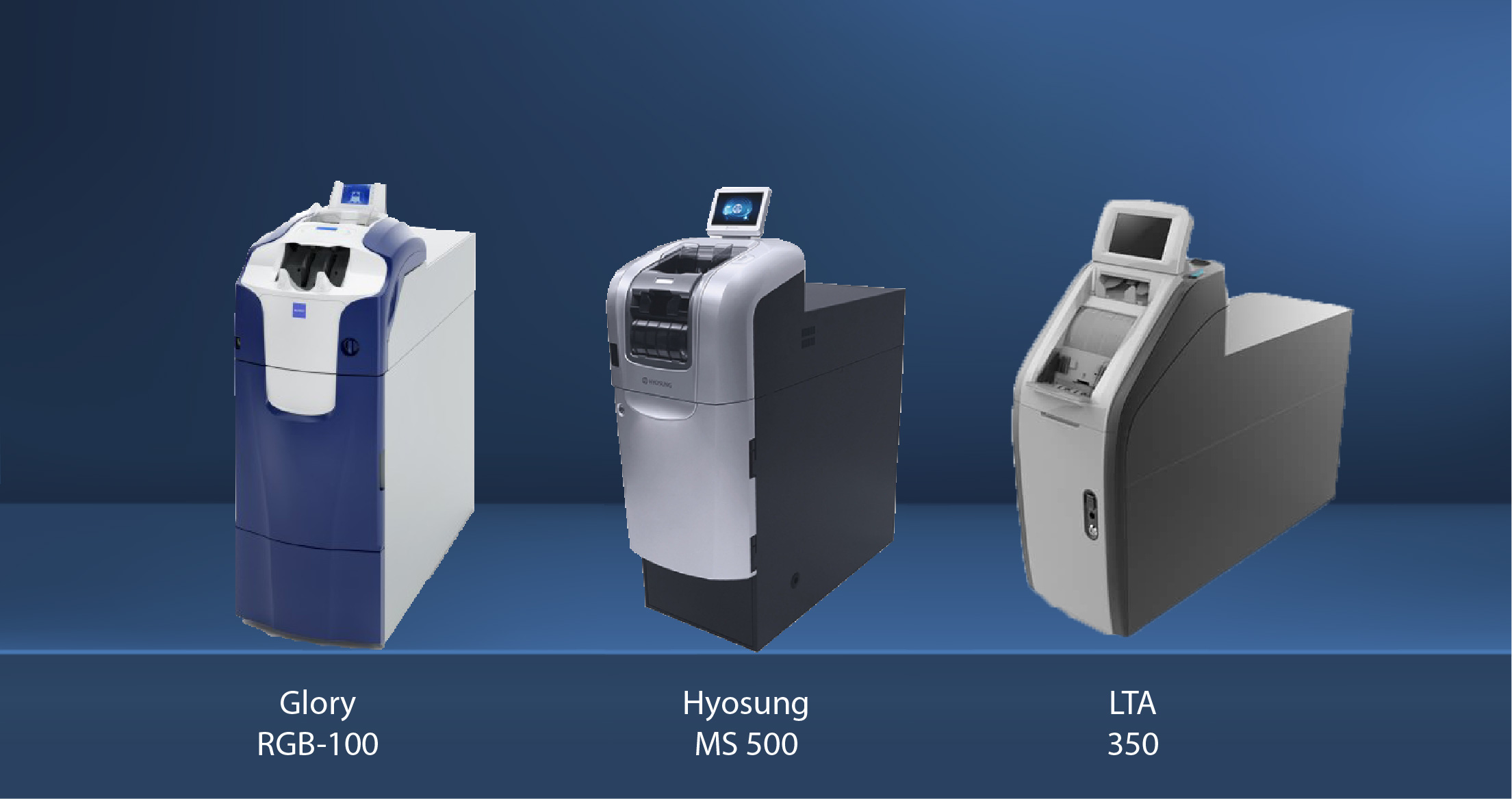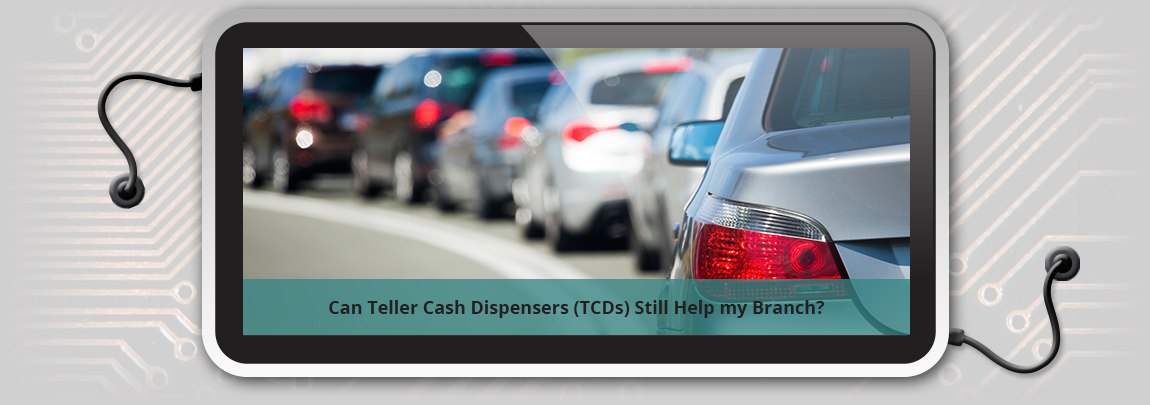5 Reasons Why You Should Reconsider Cash Recyclers (TCRs)
I will be honest, one of my greatest professional challenges is trying to convince customers that tried cash recyclers 10 years ago and possibly had...
7 min read
 Sean Farrell
:
Oct 15, 2019 2:44:37 PM
Sean Farrell
:
Oct 15, 2019 2:44:37 PM

Teller Cash Recyclers are picking up dramatic speed in implementation in the US market. Read more about this in our article 5 Reasons why you should reconsider cash recyclers. As many FIs look to improve efficiency, create new, more open branch formats, or align staffing models more towards a universal staffing model, TCRs become the cornerstone of how the branch can achieve many of those goals.
The US has traditionally lagged other markets around the world like Asia and Europe in implementing automation technology, however, now is a sweet spot where many FIs have been forced with increasing regulatory costs, to drive more efficient branches focused on interaction instead of transaction.
While TCRs have been around for years, the market is truly shifting towards cassette-based TCRs. Cassettes provide greater speed, capacity and some unique functionality that can drive operational improvements even over the standard RSM type TCRs that have been around for over a decade. In this article we cover the top units in the space, what is driving their success and what are some key differences to consider between the products.
Japanese company Glory has always been known for making highly reliable, top performing products. When they acquired market share leader Talaris in 2012, it turned them into a global sales and marketing leader, in addition to being a quality manufacturer. The RBG-100 replaced the older RBU-11, and added speed, capacity and a unique lower drawer for added cash capacity.
The RBG-100 boasts the largest total note capacity of any TCR on the market. This is fueled by a 4500 note bottom stacking drawer. The drawer is for overflow notes and less fit notes, and can provide a lot of extra room for cash positive branches handling high deposit volume. The RBG-100 operates at 10 notes / sec on deposit and withdrawal, boasts an interactive screen on top and also utilizes continuous feed for smooth deposit process, without having to batch notes. Here is a comparison of the Glory RGB-100 vs Hyosung MS500.
Korean-based ATM manufacturer Hyosung, delivered their first TCR to the US market in the form of the 400A product. This product leveraged recycling technology from their assisted self-service terminals and implemented those concepts into a teller line recycler.
Without continuous feed and some initial engineering challenges, the 400A was quickly replaced with the MS500. The MS500 boasts industry leading speed, competitive capacity and a unique transit cassette feature that solves a few key operational challenges.
The MS500 operates at 12 notes per second on deposit and withdrawal, also has continuous feed, an overflow cassette of roughly 2000 notes and the unique transit cassette. The transit cassette is an external cassette that can be married up to the front of the unit to load inventory, remove inventory and perform self-audit functionality driving key operational benefits without exposing cash.
The ability to not expose raw cash in an open branch environment can be a key security differentiator, where many FIs won’t allow the loading or unloading of inventory from the machines during the day to mitigate risk. Hyosung has now deployed thousands of MS500s across the US, and since they are relatively new in the TCR space, they are quickly becoming the fastest growing TCR company across the market as well.
Korean-based LG brought the LTA-350 to the US market via a partnership with BranchServ out of Connecticut. Shortly after establishing a presence and distribution channel, LG sold off the division to a less common manufacturer ATEC, also based in Korea.
The LTA-350 has started to gain traction in the market via BranchServ and it’s dealer network across the US providing sales and service support for the product. The LTA-350 is still a work in progress, but continues to improve its functionality and reliability across the product.
With any new solution it can take time to truly “come into its own” and prove itself over time. As a side note, a recent partnership with ARCA has allowed ARCA to sell this product as the Vero.
The LTA-350 boasts 12 note per second times on deposits and withdrawals, but falls slightly short of those metrics on withdrawals with multiple denominations. You’ll notice less speed when withdrawing multiple denominations as the machine shifts between cassettes.
The LTA-350 boasts slightly larger capacity than the MS500, by roughly a half of a cassette. The LTA-350 also has a unique “operational cassette” that doubles as an overflow cassette, but can also be used for audit and inventory purposes assuming its empty.
The operational cassette also allows you to perform a self-audit with the safe closed, further reducing cash exposure and noise of the external transit cassette of the MS500. However, some of the processes to utilize the operational cassette can be cumbersome and again requires steps to make the cassette empty before being used for transit or audit purposes.
Now that you know more about the products themselves, we’ll talk more about how they compare against one another and their strengths and weaknesses.
Both the MS500 and LTA-350 win this category based on the 12 notes per second, continuous feed flow they both have. That comes out to roughly a 20% advantage over the RBG-100. The RBG-100 makes up some of that speed difference by starting its processing a little quicker than the MS500 and LTA-350. Both the MS500 and LTA-350 take about 33 seconds to process 400 notes on a deposit. That would compare to 40 seconds for the RBG-100.
This is one of the major reasons that cassette-based units are taking dominant market share. The typical speed of deposit for an RSM based machine is 4-6 notes per second. The cassette based units are able to process money 2-3 times faster on deposit, do so without having to batch money(most of the RSM based units can only do batches of 100-200 notes at a time), and have higher capacity to put those notes into requiring less inventory management functionality.
The RBG-100 boasts large recycling capacity (12,600 notes) and supplements that with 4500 notes of overflow drawer capability giving the total machine over 17,000 notes of total capacity. The only downside to that overflow drawer is it can only be processed manually by opening the drawer and physically removing the cash and likely having to count/process that cash through a money counter of sorts.
The LTA-350 comes in second in total capacity, boasting 4 large cassettes and a split cassette. The total recycling capacity is up to 12,000 notes, and when the operational cassette is factored in, that provides and additional 2000+ notes for overflow storage.
The MS500 is closely behind the LTA-350, still with large capacity of 3 large recycling cassettes and 3 small recycling cassettes. The MS500 also has an additional large cassette for overflow capability.
So glad you asked. The overflow feature of cassette-based units allows that when any denominational cassette is full, the excess money coming in during a transaction can still be counted and stored, it just gets stored in the overflow cassette.
This is a huge advantage of operational timing, because it allows staff to continue to run transactions until the timing is more convenient to deal with inventory removal. The RSM based TCRs don’t have any overflow capability and because they already have half or less the capacity of the cassette-based units, when a denomination fills up the only place for the excess notes to go is back out to the teller.
This can cause confusion or panic where I have half the deposit in the machine and half in my hands and I have to try and reconcile and get the customer out of my window with an accurate transaction.
Then I likely need to immediately remove some inventory from the TCR to allow for more transaction to occur without having cash come back to me as a teller. Read about how cash recyclers allow access to cash here. The overflow and transit cassettes add a ton of operational value on the backend besides just the transaction efficiency that any TCR can provide for customer facing activities.
The RBG-100, which launched back in 2012, is the most mature machine of these 3. Glory has always been known as a quality manufacturer and have had time to refine this product over 7 years now. Recently, the RBG-100 added a larger display screen to compete with some of the new challengers in the space like the MS500 and the LTA-350. With maturity comes reliability typically.
The RBG-100 has worked out the majority of bugs associated with the product and is really a solid performer. The only Achilles heals for the product are the RSM storage drum for rejected notes and the fact that the machine tends to reject a lot more notes when the overflow drawer in the bottom is turned on. There are Glory dealers in the market that don’t even turn on the extra capacity of the 4500 note drawer, due to better overall note performance.
The MS500 is really in its 4th year of major market deployment. The product, which was a dramatic improvement over the 400A, has added new sound reduction material to quiet the unit and has greatly improved jamming performance.
The biggest con to the MS500 can be jamming while utilizing the transit cassette on lower, less fit denominations during audit or inventory processes. Overall the product has really come into its own in 2019 and continues to build its reliability it the market, a cornerstone of what Hyosung is known for as an engineering company.
The LTA-350, still the newest player in the market, has had some struggles out of the gate, but has shown dramatic improvement of late. When any product comes to the US, the challenge of handling US notes, with a wide range of fitness, in a high intensity branch space, is a real factor for success.
The LTA-350 continues to be a valuable solution to the market and has reached a fairly wide market share in a relatively short period of time. With the coming LTA-450 product, it will be interesting to see if the LTA-350 loses focus, or both products continue to be sold in a complimentary fashion.

At the end of the day, any of these 3 choices are very solid selections to improve branch operations. They all function relatively similarly, with a few differing bells and whistles. Glory, being the large billion-dollar company, brings a legacy of great products and is mostly past the distraction of its Talaris merger.
Still at times, their arrogance about a market share that was once 90% of the market, falling to 60% worldwide can turn clients off, especially in the community bank and CU space.
Hyosung has a great track record on the ATM side of the business and continues to be an innovator in the branch transformation space. With their relatively short tenure in the TCR space, I can only assume the product suite will continue to get better.
Just announcing their new MS500S(sit down style) unit, they continue to add variety to best serve the market. I anticipate their market share will continue to rise.
The LTA-350 has proven to be a very viable option now in the TCR market. The question long-term is will BranchServ be able to keep ATEC happy with enough volume to maintain the distributorship of the product in the US or will ATEC pivot to a new strategy.
For now, I would expect the LTA-350 to continue to gain in market share and we’ll see what value the market sees in the LTA-450.
Lastly, keep your eyes out for the new cassette-based unit from Italian company CIMA. The AST-9000, built off one of the best Hitachi mechanisms around, will likely become a force to be reckoned with starting in 2020.
If you need help understanding TCRs and how they can impact your operations, we’re here to help.

I will be honest, one of my greatest professional challenges is trying to convince customers that tried cash recyclers 10 years ago and possibly had...

As you have undoubtedly noticed, the marketplace has been seeing a large migration towards Teller Cash Recyclers (TCRs). Cash recyclers automate both...

It's late Friday afternoon, and each lane of your drive-through is five cars deep. Inside the lobby, the line at the teller counter has tripled in...